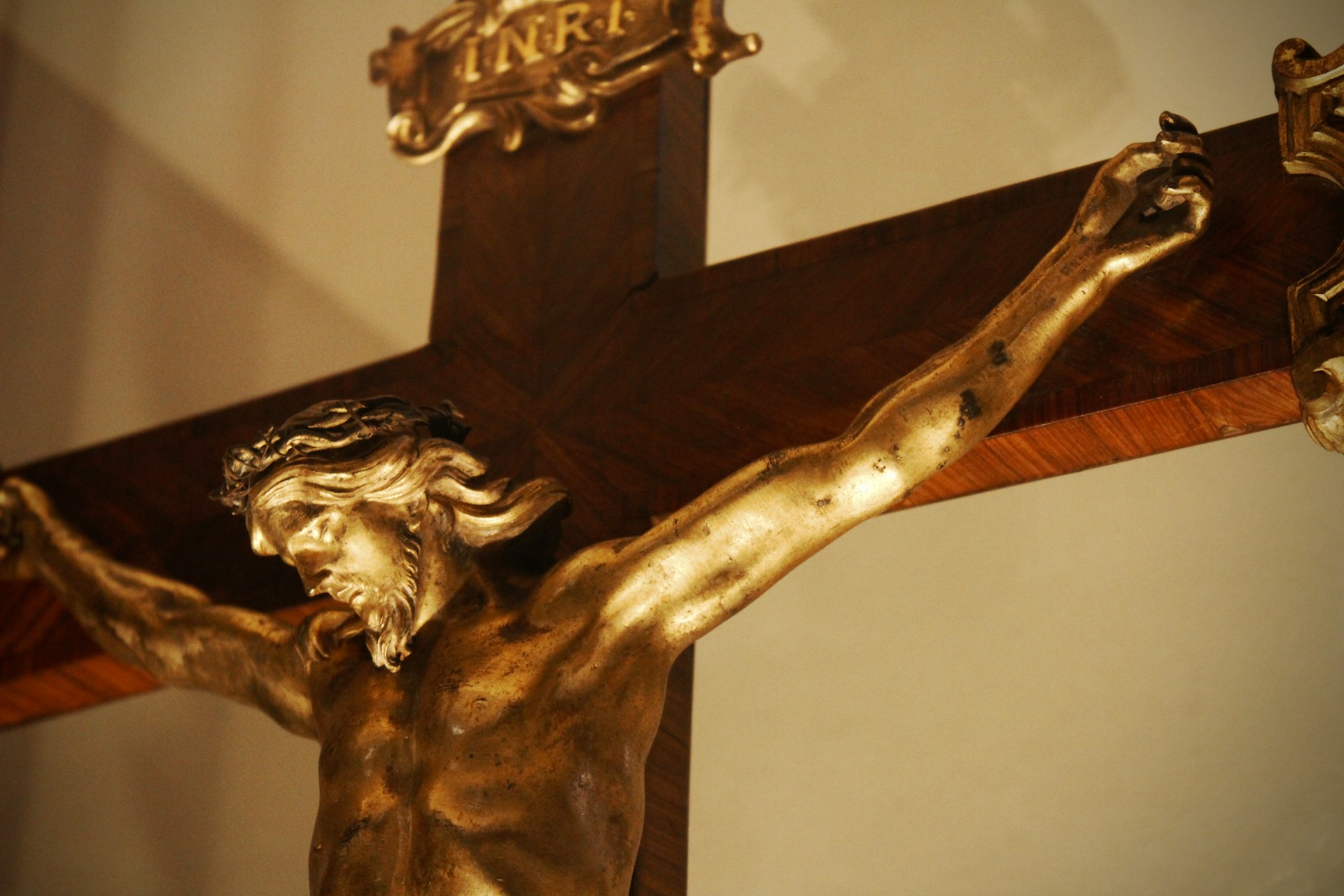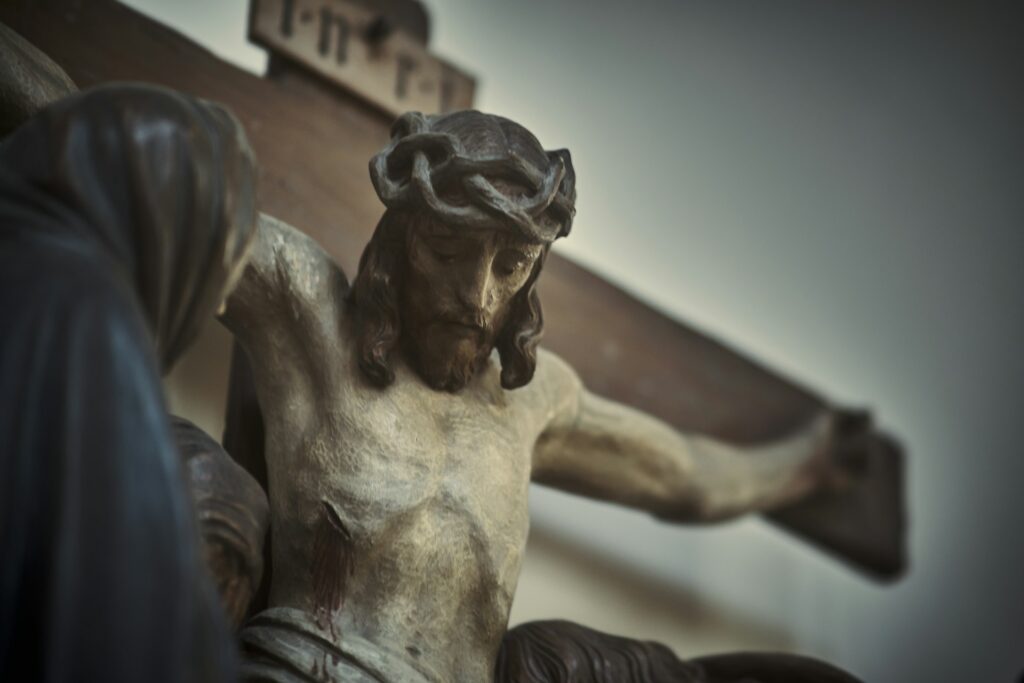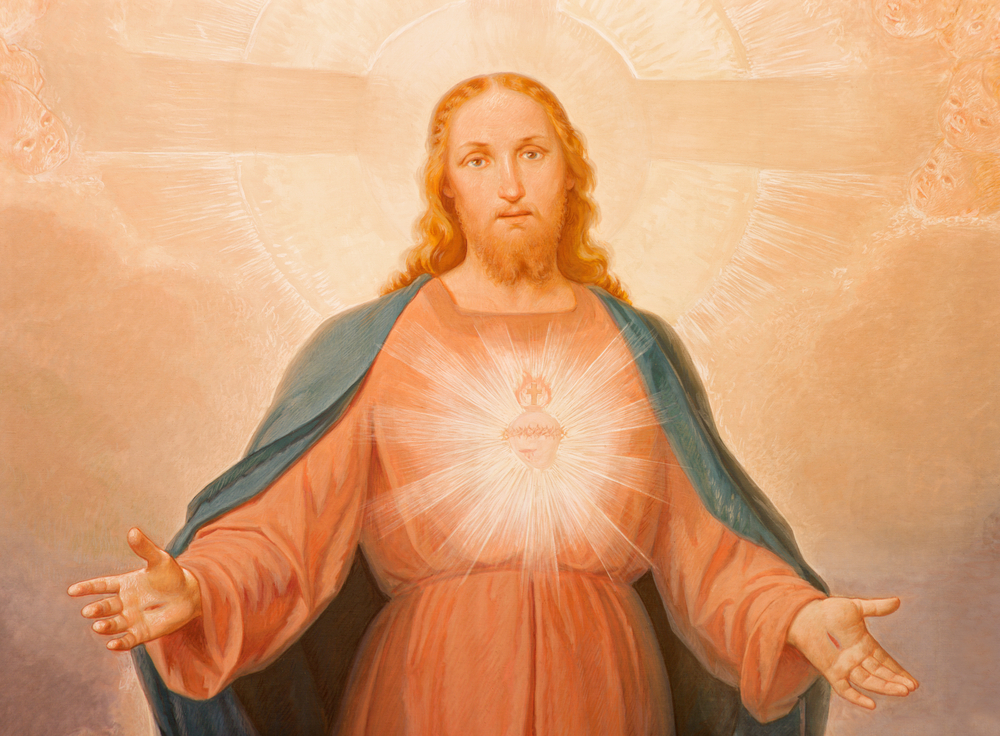Viral $20 Jesus Picture ‘Leaking Oil’ Sparks Claims Of Miraculous Healings

A cheap picture of Jesus bought from an online store has become the latest global mystery after reportedly leaking a thick, fragrant substance that some claim has healed illnesses, including cancer. What started as one woman’s strange encounter in her home has now turned into a worldwide phenomenon that’s left both believers and skeptics at odds.
The story spread after neighbors and friends noticed the substance forming on the glass frame and dripping onto the table. Witnesses describe the scent as calming and floral, similar to incense used in religious ceremonies. Some visitors reported feeling an overwhelming sense of peace when they stood near the picture, while others said they experienced chills and a warmth through their body that they could not explain. As word traveled beyond the community, religious groups and curious onlookers began visiting from other states to see what they called the “miracle picture.”
News reports from outlets like The New York Post have chronicled how a $20 replica image of Jesus Christ began secreting what many describe as a sweet-smelling, honey-like oil. According to witnesses, this liquid has been collected and applied to the sick, with some testifying to miraculous recoveries. Scientists remain unconvinced, but faith-driven communities are calling it a modern-day miracle.
Adding to the mystery, people who purchased identical pictures online reported similar events. A small online forum dedicated to religious phenomena has collected over a thousand posts documenting parallel occurrences in households across the United States and abroad. These accounts range from faint oil stains appearing beneath the glass to full drips forming over several days. For believers, each new report strengthens the sense that something extraordinary may truly be happening.

The Humble Beginning Of A Global Mystery
It all began in the small home of a woman from Georgia who purchased a framed image of Jesus online for less than the price of a takeaway meal. Within days, she claimed the picture began to ooze a sticky substance that dripped down the glass. The smell, she said, was similar to myrrh, an oil used in ancient religious rituals. Word spread quickly after friends shared photos and videos of the phenomenon on social media, leading to crowds visiting her house to witness it firsthand.
Soon, religious believers from different states began ordering identical prints, hoping to experience the same event. Surprisingly, some reported the same occurrence. Videos circulating online show the image releasing a shimmering, golden oil that stains hands and tablecloths. For some, this was all the proof needed that something divine was unfolding. Others argued it was an elaborate hoax or a misunderstood natural process.

Local churches became involved when clergy were invited to inspect the picture. Several pastors confirmed that the oil appeared genuine and that the scent was unlike anything they had encountered. Pilgrims began bringing bottles and containers, collecting the substance for prayer and healing. Whether or not one believes in miracles, the sight of long lines of hopeful visitors shows how deeply faith can move people.
The homeowner insists she has no scientific explanation for what is happening. She told that she never wanted attention or money, only to share what she believes is a sign of divine presence. The mystery continues to grow as more people claim to have witnessed similar events in their own homes.
Isn’t it wild you can physically go and see an Orthodox icon stream miraculous myrrh with your own eyes and there’s STILL people who don’t believe in Christianity. pic.twitter.com/v8laTN3Wbd
— Ben Luigi (@RealBenLuigi) October 16, 2025
Miraculous Healings Or Mass Hysteria?
The most controversial part of this story involves the alleged healings. Dozens of testimonies have emerged from people who claim the oil has cured their ailments. One man stated that after applying the substance to his chest, his chronic pain disappeared. Another woman battling cancer said her scans came back clear weeks after using the oil in prayer. These stories, impossible to verify, have still managed to capture global attention.
Religious followers say the results speak for themselves. They view this as a divine message meant to strengthen faith during troubling times. For them, it is not about scientific explanation but spiritual connection. As one priest put it, miracles often defy rational analysis because they are not meant to be understood, only believed.
However, skeptics warn that anecdotal evidence is not proof. Doctors have emphasized that recovery stories could be coincidental or driven by placebo effects. Several chemists interviewed by reporters suggested the substance might be a form of synthetic resin or natural condensation reacting with the material of the frame. Without laboratory testing, they say, no conclusion can be drawn.
Despite warnings, the movement around the picture continues to grow. Faith gatherings have been organized where the oil is shared among the sick, and hundreds have posted online thanking God for healing. For some, it’s hope in its purest form. For others, it’s a dangerous distraction from proper medical treatment.
The Science Versus The Spiritual Debate
Whenever unexplained phenomena emerge, science and faith inevitably collide. In this case, believers see a divine miracle, while scientists call for rigorous testing. Experts point out that myrrh and other oils can appear naturally through condensation, resin leakage, or manufacturing flaws. Without controlled experiments, it’s impossible to say the picture produces anything supernatural.
Yet the emotional and psychological impact of faith cannot be ignored. Placebo studies have shown that belief itself can trigger physical changes in the body, leading to reduced pain and improved well-being. Even if no miracle oil exists, the human mind’s capacity to heal through hope is remarkable. That could explain why so many feel different after encountering the picture.
Religious scholars have also weighed in, noting that history is full of alleged sacred objects producing mysterious substances. From weeping statues in Italy to bleeding icons in Greece, the world has seen similar reports for centuries. Each time, investigations reveal divided opinions: some cases are proven hoaxes, while others remain unexplained.
What makes this event unique is its accessibility. Unlike rare relics hidden in monasteries, this picture can be bought online. The idea that an ordinary household item could carry divine power fascinates believers and challenges skeptics alike. It blurs the line between faith and commerce, between the sacred and the mundane.

Social Media’s Role In Spreading The Miracle
In today’s world, no mystery stays local for long. The viral spread of the Jesus picture story highlights how digital platforms shape modern faith experiences. Within hours of the first post, TikTok and Instagram were flooded with clips of people examining their own pictures for signs of oil. Hashtags like #JesusOil and #DivineHealing trended globally.
Social media users debated passionately in the comments. Some called it the greatest miracle of the century, while others dismissed it as manipulation or pareidolia, the tendency to see meaning in random patterns. Influencers and religious leaders livestreamed prayers featuring the image, turning a private household event into an online pilgrimage.
The phenomenon also reignited discussions about the commercialization of faith. Sellers on online marketplaces began offering “anointed” prints for inflated prices, despite warnings from church leaders to avoid profiting from spiritual experiences. Still, the market surged, showing how quickly belief can turn into business.
Even amid skepticism, the story’s emotional pull cannot be denied. Millions of viewers around the world paused to reflect on the possibility of divine intervention. Whether they believe it or not, the viral nature of this event demonstrates how technology continues to shape the way humans interpret the sacred.

What Believers And Skeptics Can Both Learn
The $20 Jesus picture story may never be solved definitively. What it reveals, however, is far more profound than the debate over miracles. It highlights humanity’s timeless desire for hope, especially in an era filled with uncertainty. People crave signs that life has meaning, that healing and goodness are still possible. Whether through faith or science, that longing unites us all.
For believers, the lesson may be to hold faith close but remain mindful of truth. Genuine miracles do not depend on viral fame or online followers. For skeptics, the challenge lies in approaching such events with empathy rather than ridicule, acknowledging that belief often fills emotional and psychological needs that data cannot measure.
Ultimately, whether the oil is a divine sign or a natural reaction, its greatest power lies in what it represents: the human spirit’s relentless search for connection and comfort. The mystery may fade, but the questions it raises will endure about faith, evidence, and the ways people find meaning in an unpredictable world.
Featured Image Credit: Courtesy of Lorenzo Turroni | Unsplash
Loading...

